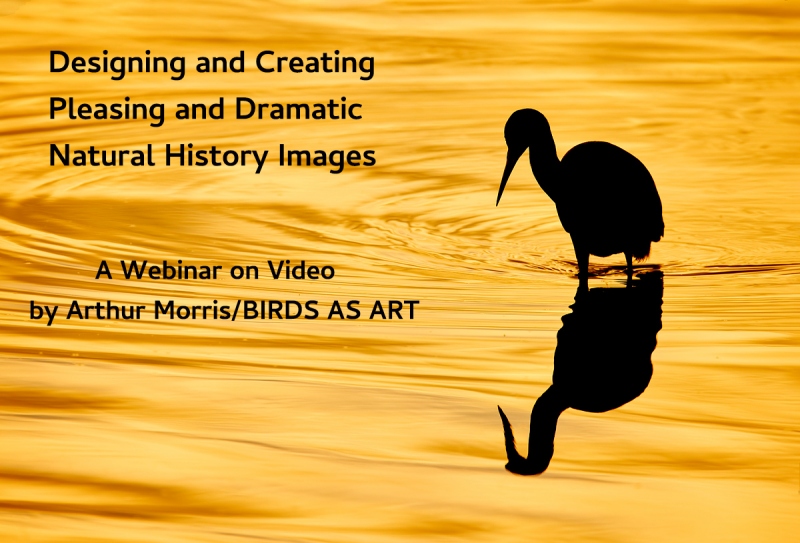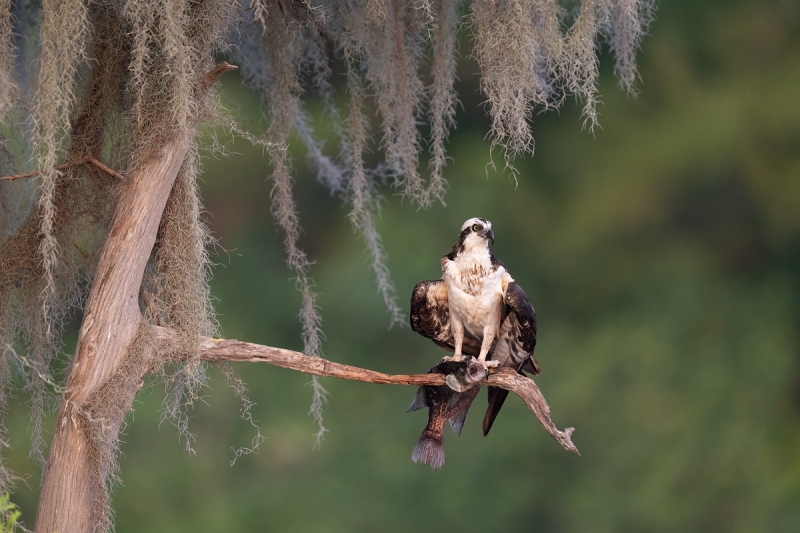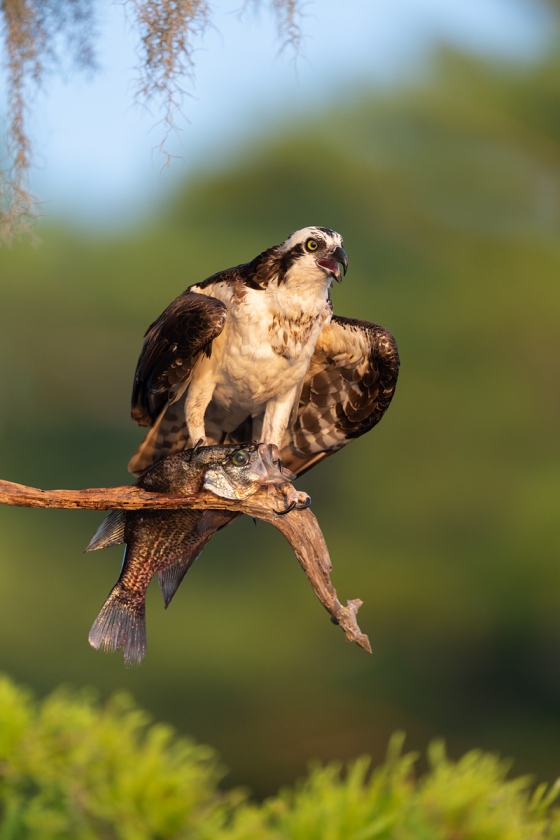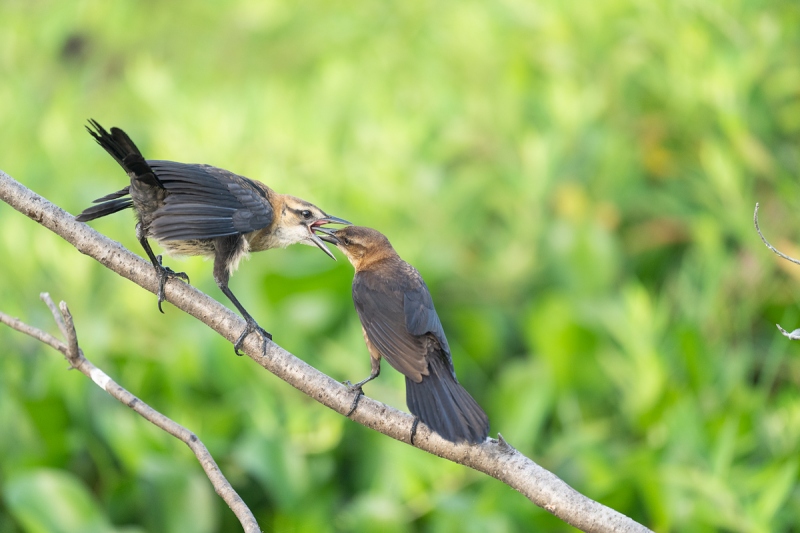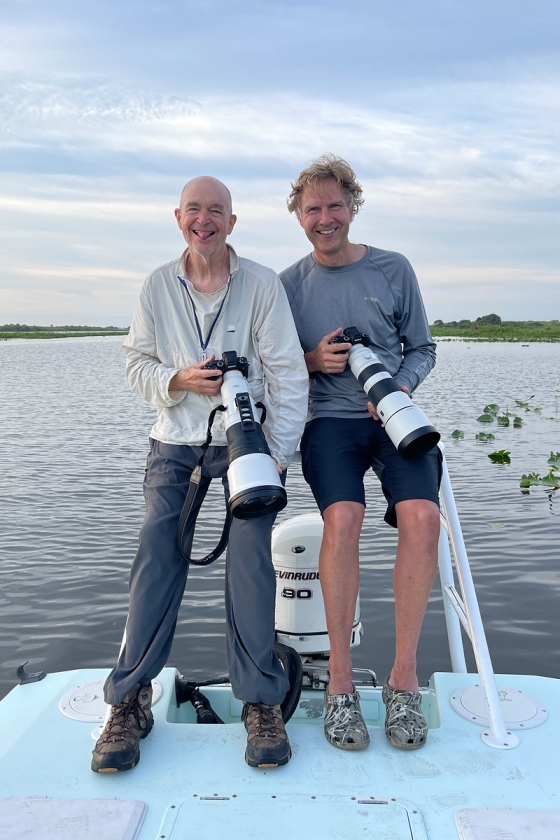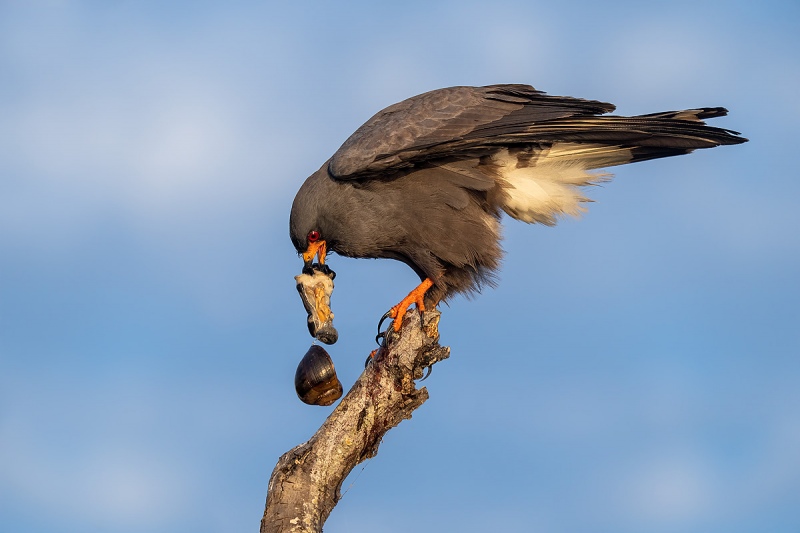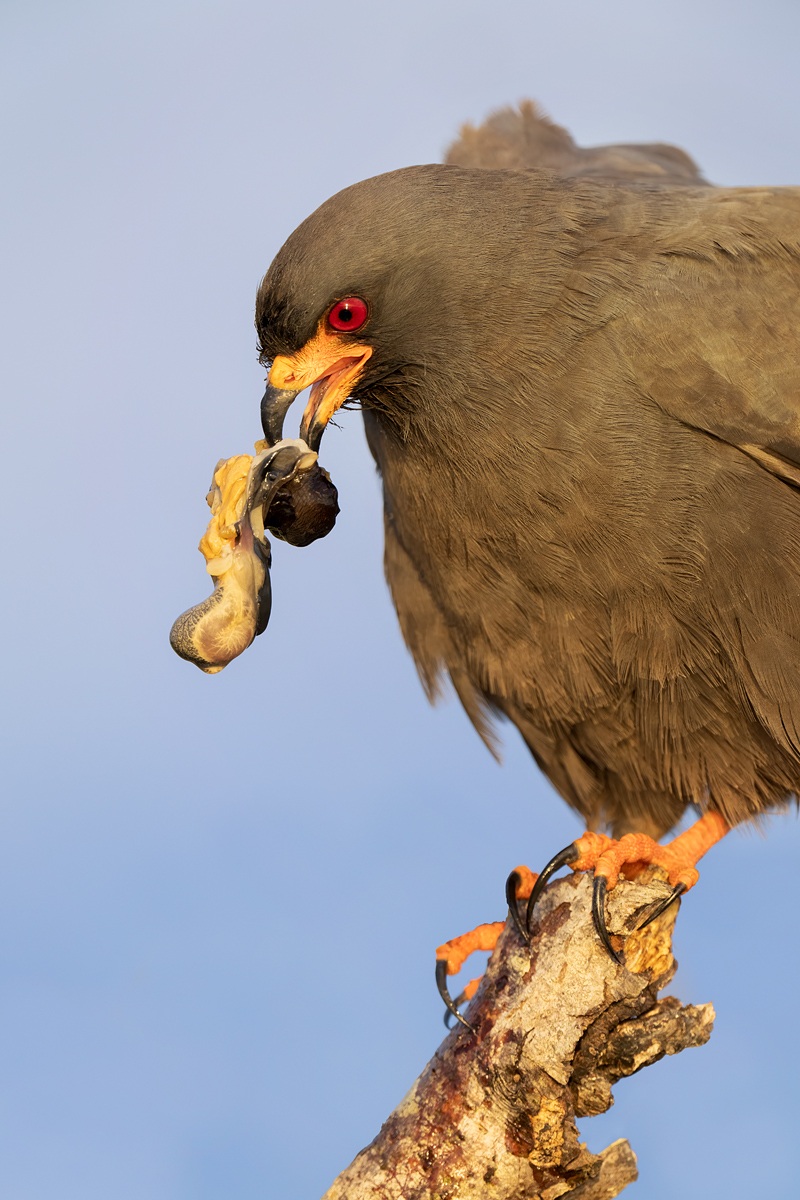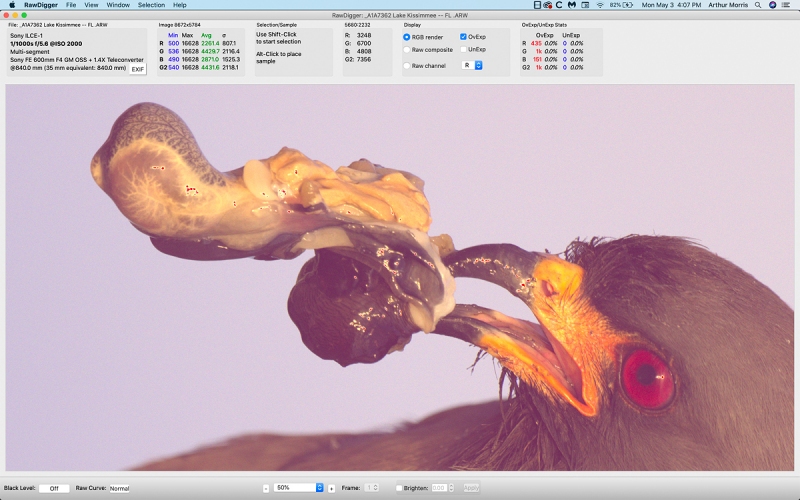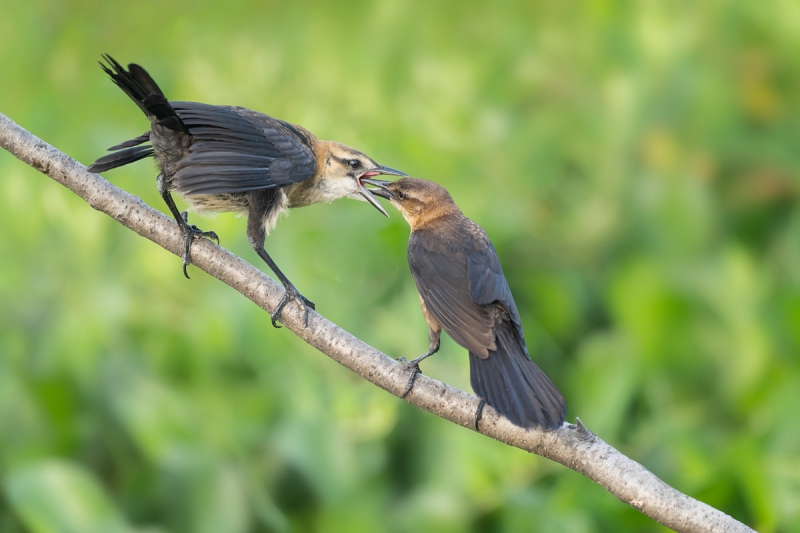What’s Up?
After many, many consecutive days of photography, I opted to take a day off on Wednesday. Anita went down to the lake and came back with some beautiful wing-stretch images of the large surviving colt.
I spent several hours working on this blog post and getting the webinar into the BAA Online Store. Those who are confident that they will learn from the video and anxious to watch and learn from it, can skip all the fanfare below and order their copy of Designing and Creating Pleasing and Dramatic Natural History Images/A Video Webinar by clicking here.
Today is Thursday 6 May 2021. It is cloudy-dark and still at 7:00am so I am taking another day off to get some work done. Wherever you are, and whatever you are doing, I hope that you have a great day.
This blog post took about four hours to prepare, and makes 133 consecutive days with a new one. Please remember that if an item — a Delkin flash card, or a tripod head, for example, that is available from B&H and/or Bedfords and is also available in the BAA Online Store, it would be great if you opt to purchase from us. We will match any price. Please remember also to use my B&H affiliate links or to save 3% at Bedfords by using the BIRDSASART discount code at checkout. Doing either often earns you free guides and/or discounts. And doing so always earns my great appreciation.
The Bluer Sky
Thanks to the many who posted thoughtful comments yesterday. Yes, Clemens shot and processed darker than I did. But as he was photographing from about two feet higher than I was, he was seeing a different portion of sky. As things were, I was pointing my lens up at the subject into a part of the sky with lots of clouds, while Clemens had set his image against a lower, darker, and bluer section of the sky.
The point that I thought that I was making (and failed miserably to do), is that on a clear day, the sky darkens by about two stops as you raise your lens from just above the horizon to directly overhead.
Low Carb Seafood Curry
I never work from a recipe but often create my own. I tried this last night with spectacularly delicious results.
Cut up ten ounces of Brussels sprouts, place in a foil wrap, pour on two ounces of avocado oil, season with salt and pepper, loosely seal the foil wrap, and place on a hot barbecue while you prepare the seafood curry as below.
1- Sautée 1/2 large yellow onion and two stalks of celery in Avocado oil for five minutes.
2- Slowly pour in two ounces of no sugar added almond milk.
3- Add curry powder to taste.
4- Salt to taste
5- Stir and simmer until the sauce begins to thicken.
6- Slowly pour in two more ounces of no sugar added almond milk.
7- Add six ounces of jumbo shrimp and six ounces of scallops (or 12 ounces of chicken or lamb).
8- Simmer and continue to stir gently for about five minutes until the protein is done.
Once the sprouts are well done — I love mine crispy on the grill, add them to the curry and serve two. Enjoy.
|
|
Designing and Creating Pleasing and Dramatic Natural History Images |
Designing and Creating Pleasing and Dramatic Natural History Images
A Video Webinar
In this 1 hour 28 minute plus video you will learn and be inspired. We cover everything from the very basics to the fine points. After a brief bio, the topics include Behavior, Action, Diagonal Lines, and the Cuteness Factor; Birds in Flight — The Holy Grail of Bird Photography; Mis-Framing!; Basic Image Design/HORIZONTALS: Get the subject out of the center of the frame. Basic Image Design/VERTICALS: The center of the frame is generally fine; The Importance of BACKGROUND; Isolating the Subject; Other Elements of Composition; On Getting Low; Going Wide for Bird-scapes; Super-tight!; Working in Sunny Conditions; Working in Cloudy Conditions; Working in Foggy Conditions; Working in the Shade; Working in Bad Weather; Creating Back-lit Images; Creating Silhouettes; and Creating Pleasing Blurs.
Each segment of the program consists of an average of about 15 images that will drive home the points being made, educate you, and inspire. The instructions and advice, given clearly and concisely, are based on my near-38 years of experience photographing birds with telephoto and super-telephoto lenses. And on several decades of creating educational blog posts.
This presentation is based on the webinar that I did for the South Shore Camera Club in April. You can find some of the comments below along with comments from two of the folks who viewed the webinar the night before the DeSoto IPT began.
You can order your copy of Designing and Creating Pleasing and Dramatic Natural History Images/A Video Webinar by clicking here or by calling Jim with your credit card in hand at 863-692-0906.
Anita North
Though I have been inspired by and learned from you for several years, doing the webinar the night before the IPT began was particularly noteworthy. I should watch it or create and study a cheat-sheet based on it before every shoot. In the video you cover all the bases: assessing the location, the weather, the light, the wind direction, and the sun angle. You talked about finding good opportunities, isolating the subject, composing the image, getting low or high, seeing the background, leaving an unproductive location trying somewhere else, and lots more. Photographing birds at the beach is a big challenge on all accounts and doing the session the night before was terrific and helpful. I was attentive and focused on what I needed to do. The webinar reminded me of the walk-around check-list that pilots are trained to do before they fly.
Donna Bourdon
Doing the webinar as the introductory program for the DeSoto IPT was a stroke of brilliance. When we headed out each of the next four days, I was inspired and felt completely prepared. Your instructional style is always easy to relate to, especially as you describe the attention to detail in each of the photographs that you shared in the webinar. You reminded us of the importance of getting low, of paying attention to the image design, particularly at the bottom of the frame, and to trust the focus tracking. These instructions improved my images a thousand-fold. I always avoided getting low because I don’t like sand all over me and my camera. But because of the inspiring images and your comments during the webinar, I decided to challenge myself. As is usual, you were right. What a difference it made to be at or near eye level with our subjects rather than be shooting down on a beautiful bird. I also started trusting the focus tracking on the Canon R5 and wasn’t disappointed; thanks again for helping me set it up correctly. It tracked perfectly and I was able to set up pleasing compositions in camera instead of during post-processing. Thank you Artie for always encouraging me to be my best.
Joe Usewicz
Excellent program last night. Zoom is not easy. Stopping for questions, as well as the quality of questions, really worked out well.
Phill Bird
Great program last night, Artie. Thanks very much for inviting your followers to attend. Your photos and instruction are inspiring.
Elinor Osborn
Thanks for the invitation to last night’s program. It was very informative and beautiful as usual.
Bruce Boswell
Absolutely wonderful program last night. Thanks so much for inviting us to the zoom presentation. At the end I wanted to see more!
Michael Pollak
Thanks for last night’s excellent and informative presentation. The examples of your photography you shared were very inspiring.
Walt Foreman
Thank you for setting up last night’s webinar so blog readers could join in. It was enjoyable and educational! The webinar was a great success from my audience point of view. And I’m sure there were plenty of other people “out there,” like me, who wanted to jump in with “cosmos” and “lenticular”! The energy was there in both directions, even if you mainly felt your own generous expenditure.
|
|
|
This image was created on 2 May 2021 on Lake Blue Cypress working from Clemens Van der Werf’s flats boat. I used the hand held Sony FE 600mm f/4 GM OSS lens and The One, the Sony Alpha 1 Mirrorless digital camera. ISO 2500. Exposure determined via Zebras with ISO on the rear dial: 1/640 sec. at f/4 (wide open) in Manual mode. AWB at 6:55am with a cloud in front of the rising sun. Wide/AF-C was active at the moment of exposure and performed perfectly. Click on the image to see a larger version. Image #1: Osprey with whole Black Crappie in low light |
My Favorite?
From the start, I liked the tighter image, #2 below, best. But after a while, I came to appreciate the wider view and the softer light in Image #1 (immediately above). I still love them both, but might actually give a slight edge to the wider, cooler version that better shows the habitat. Go figure.
|
|
|
This image was also created on 2 May 2021 on Lake Blue Cypress working from Clemens Van der Werf’s flats boat. Again, I used the hand held Sony FE 600mm f/4 GM OSS lens and The One, the Sony Alpha 1 Mirrorless digital camera. ISO 1600. Exposure determined via Zebras with ISO on the rear dial: 1/1000 sec. at f/4 (wide open) in Manual mode. AWB at 7:04am in very soft golden light. Wide/AF-C was active at the moment of exposure and performed perfectly. Image #2: Osprey with whole Black Crappie in soft, sweet light |
Why the Larger, Heavier, More Difficult to Hand Hold 600mm f/4?
In the Osprey with Black Crappie: Cool Light/Warm Light. And Hand Holding a 600mm f/4 Lens … blog post here, Why would I hand hold the much heavier 600mm f/4 GM when the 200-600 G with my second a1 body lay on the deck?
Many folks brought up depth-of-field issues. But depth-of-field had nothing to do with my decision (and little to no effect on either image). Scroll down to learn more about long lenses and depth-of-field. In low light, I went with (and will always go with) the 600f/4 because of its speed; working at f/4 saves you 1 1/3 stops of either shutter speed or ISO. With both featured images I went with a shutter speed that would likely yield a sharp image. Had I used the 200-600 for the Image #1, I would have had to raise the ISO from 2500 to 6400 to maintain the 1/640 sec. shutter speed. For Image #2, I would have had to raise it from 1600 to 4000 to stay at 1/1000 sec. Don’t forget that the boat was rocking a bit in the breeze.
Byron Prinzmetal and Chris Loffredo flirted with the correct answer while mentioning depth-of-field. Kudos to Adam, who hit the nail on the head when he wrote, The answer is in your settings, Tv 1/1000, f/4, ISO 1600. Had you used the 200-600 at f/6.3 you would have had to adjust by 1 1/3rd stops either dropping the Tv or increasing the ISO (or both).
Folks who read the fine print can try this on for size: in general — when hand holding in difficult situations, the closer you are to the subject at a given focal length, the more shutter speed you will need to make a sharp image. Here is an easy way to grasp this concept: if you are shooting a flock of distant geese at a shutter speed of 1/30 sec. while panning smoothly, many of the birds will look quite sharp. If you are photographing a single goose flying by you at close range at the same shutter speed, the best result would be an extreme angelic blur. As we had gotten a lot closer to the subject, I instinctively raised the shutter speed from 1/640 sec. for the first Osprey image to 1/1000 sec. for the second image.
|
|
|
This image was created on 3 May 2021 near Coleman Landing at Shady Oaks from Clemens Van der Werf’s flats boat. I used the hand held ??? lens and The One, the Sony Alpha 1 Mirrorless digital camera. ISO 1250. Exposure determined via Zebras with ISO on the rear dial: 1/800 sec. at f/???? in Manual mode. AWB at 7:53am with some heavy cloud cover on the eastern horizon. Wide/AF-C was active at the moment of exposure and performed perfectly. Click on the image to see a larger version. Image #1: this is a representation of the raw file for the Boat-tailed Grackle feeding young image |
Aperture/Depth-of-Field Multiple Choice Question
In the Aperture/Depth-of-Field Multiple Choice Question. And Turn-around is Fair Play: Viveza Revisited blog post here, the following appeared:
Aperture/Depth-of-Field Multiple Choice Question
There is a much too much background detail in the original image above. Scroll down to see the optimized image.
What aperture was used for the image above?
a:f/4
b: f/6.3
Subject to Background Distance: More Important Than Aperture!
Only a few folks proffered an opinion; those were split right down the middle. Adam flirted with the right answer without nailing it. What folks often miss (and Adam hinted at), the distance from the subject to the background plays a far more important role in the background than the aperture. If you photograph a warbler at f/2.8 with a wall of leaves behind it the leaves will be unpleasantly in focus and thus, distracting. If you photograph a perched Bald Eagle at f/16 with a garbage dump background that is a mile away, the dump will be rendered as a pleasing out-of-focus wall of color.
The focal length and the distance to the subject will also affect the look of the background. If the focal length and the distance from the subject to the background remain constant (as with the two Osprey images above), the background will appear softer as you move closer to the subject. That is why the background in the second Osprey image appears softer and more detail-less than the background in the first Osprey image.
Typos
With all blog posts, feel free to e-mail or to leave a comment regarding any typos or errors.

